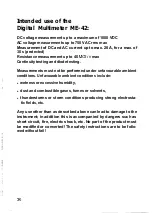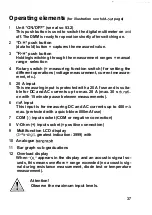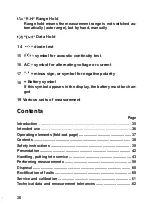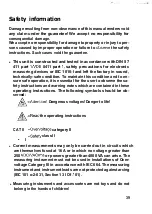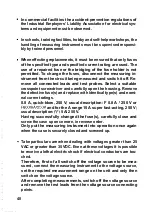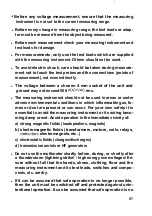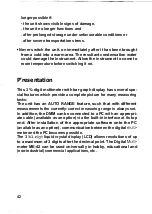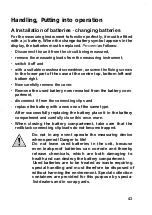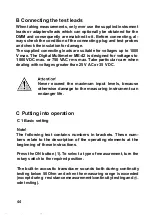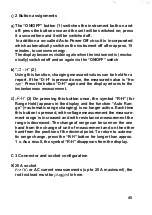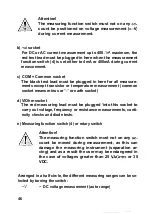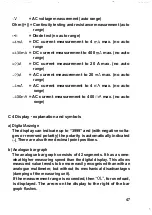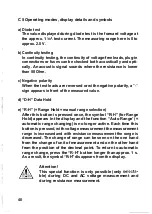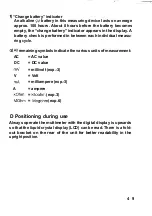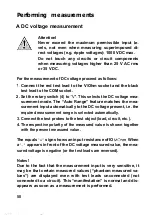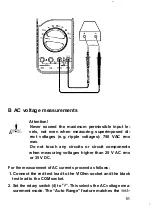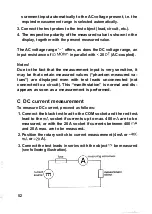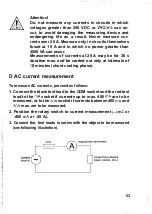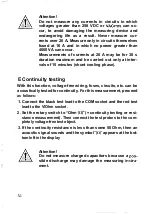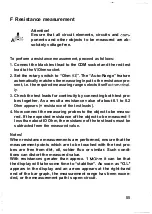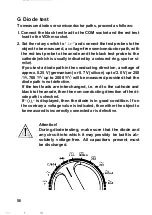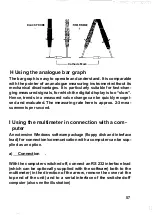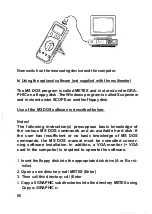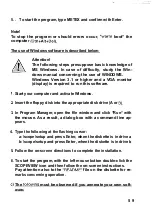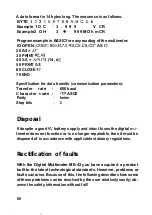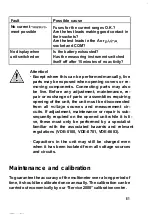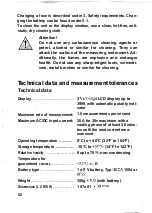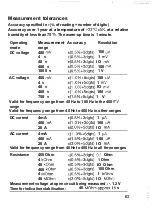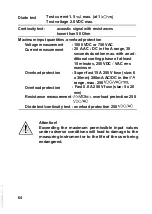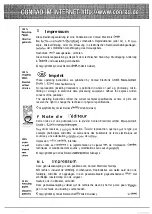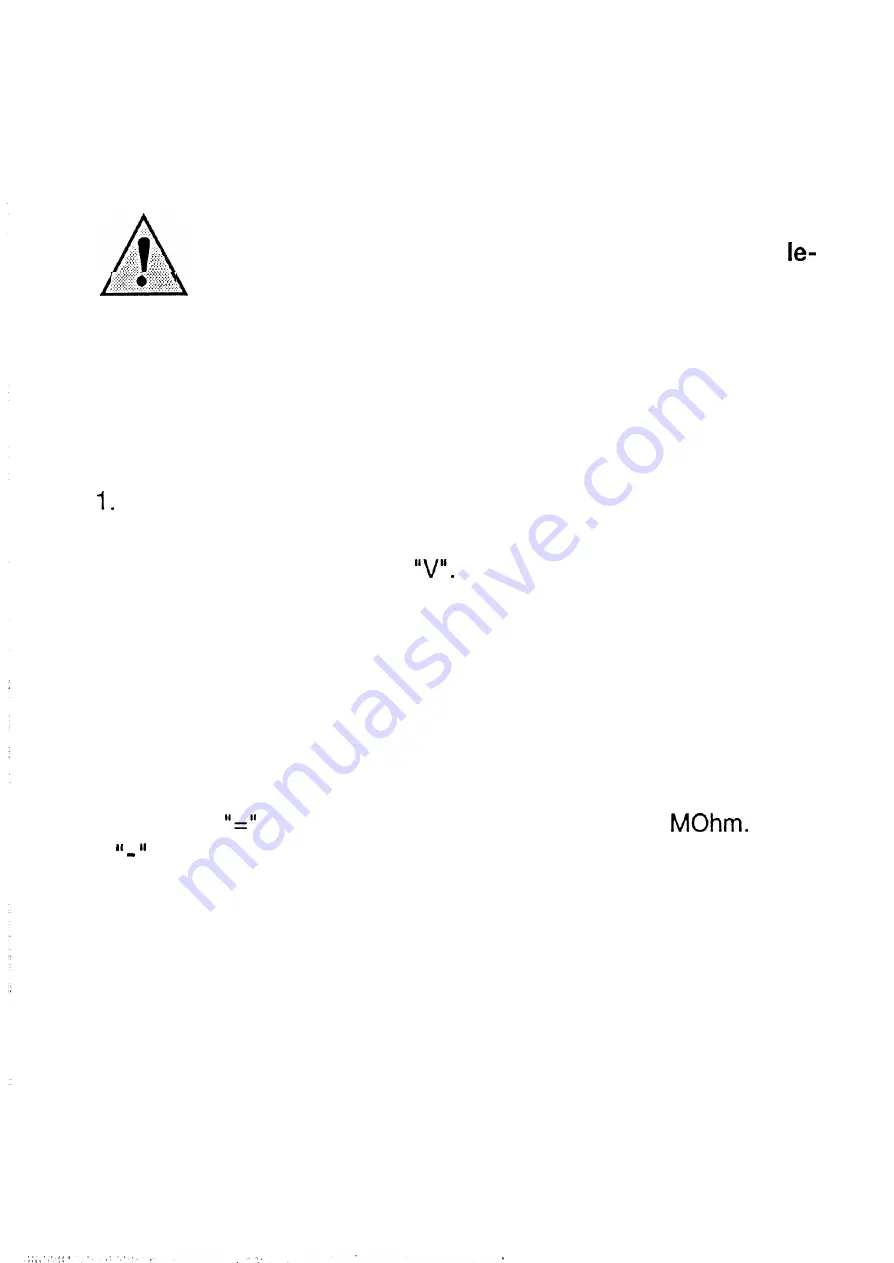
Performing measurements
A DC voltage measurement
Attention!
. . . . . . . . ..
Never exceed the maximum permissible input
.
. . .
. .
vels, not even when measuring superimposed di-
rect voltages (e.g. ripple voltages): 1000 VDC max.
Do not touch any circuits or circuit components
when measuring voltages higher than 25 V AC rms
or 35 V DC.
For the measurement of DC voltage proceed as follows:
Connect the red test lead to the V/Ohm socket and the black
test lead to the COM socket.
2. Set the rotary switch (4) to
This selects the DC voltage mea-
surement mode. The “Auto Range” feature matches the mea-
surement input automatically to the DC voltage present, i.e. the
required measurement range is selected automatically.
3. Connect the test probes to the test object (load, circuit, etc.).
4. The respective polarity of the measured value is shown together
with the present measured value.
The equals
sign shows an input resistance of IO
When
a appears in front of the DC voltage measured value, the mea-
sured voltage is negative (or the test leads are reversed).
Notes!
Due to the fact that the measurement input is very sensitive, it
may be that certain measured values (“phantom measured va-
lues”) are displayed even with test leads unconnected (not
connected to a circuit). This “manifestation” is normal and dis-
appears as soon as a measurement is performed.
50

